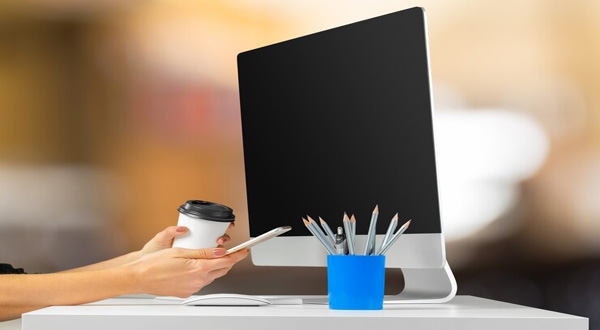How to Set Up a New Laptop: A Comprehensive Guide for Beginners
- Update Time : Tuesday, February 20, 2024
- 24 Time View

Introduction
How to Set Up a New Laptop: A Comprehensive Guide for Beginners
: Welcome to the exciting world of owning a new laptop! Whether you’re a student, a professional, or simply someone looking to upgrade their digital experience, setting up a new laptop can be both thrilling and daunting. But fear not, because in this guide, we’ll walk you through the process step by step, ensuring that you have everything you need to get started with your new device. From unpacking the box to customizing your settings, we’ve got you covered.
Table of Contents
| Sr | Headings |
| — | ————————————— |
| 1. | Unboxing Your Laptop |
| 2. | Powering Up for the First Time |
| 3. | Setting Up User Accounts |
| 4. | Connecting to Wi-Fi |
| 5. | Updating System Software |
| 6. | Personalizing Your Desktop |
| 7. | Installing Essential Software |
| 8. | Configuring Security Settings |
| 9. | Creating Backup Solutions |
| 10. | Optimizing Performance |
| 11. | Extending Battery Life |
| 12. | Troubleshooting Common Issues |
| 13. | Conclusion |
| 14. | FAQs: Frequently Asked Questions |
1. Unboxing Your Laptop
Once you’ve received your new laptop, the first step is to carefully unbox it. Remove all packaging materials and ensure that all the accessories are included. These typically include the laptop itself, a charger, and any additional peripherals.
2. Powering Up for the First Time
After unboxing, it’s time to power up your laptop for the first time. Press the power button and follow the on-screen instructions to set up your device. This may include selecting your language, region, and keyboard preferences.
3. Setting Up User Accounts
During the initial setup process, you’ll be prompted to create a user account. This account will serve as your primary login for the laptop and will allow you to personalize your settings and access your files.
4. Connecting to Wi-Fi
To fully utilize your new laptop, you’ll need to connect it to a Wi-Fi network. Locate the Wi-Fi icon in the taskbar and select your desired network from the list of available options. Enter the password if prompted, and you’re good to go!
Read More: How to Set Up a New Laptop Computer Step By Step
5. Updating System Software
It’s essential to keep your laptop’s system software up to date to ensure optimal performance and security. Check for updates in the settings menu and follow the prompts to install any available updates.
6. Personalizing Your Desktop
Make your laptop feel like home by customizing your desktop background, theme, and screensaver. Personalization options can typically be found in the settings or control panel menu.
7. Installing Essential Software
Depending on your needs, you may want to install additional software such as office suites, web browsers, or media players. Visit the respective websites to download and install the software, ensuring that you only download from trusted sources.
8. Configuring Security Settings
Protect your new laptop from potential threats by configuring the built-in security settings. This includes enabling features such as Windows Defender or installing third-party antivirus software for added protection.
9. Creating Backup Solutions
Don’t risk losing your valuable data! Set up a backup solution such as an external hard drive or cloud storage service to regularly back up your files and documents.
10. Optimizing Performance
Maximize your laptop’s performance by disabling unnecessary startup programs, clearing temporary files, and optimizing your browser settings. This will help ensure that your laptop runs smoothly and efficiently. Read More: How to Set Up a New Computer Step-By-Step
11. Extending Battery Life
To get the most out of your laptop’s battery life, adjust the power settings to optimize energy usage. You can also consider investing in a laptop cooling pad to prevent overheating, which can drain the battery faster.
12. Troubleshooting Common Issues
Encountering problems with your new laptop? Don’t panic! Refer to the user manual or online resources for troubleshooting tips and solutions to common issues such as freezing, slow performance, or connectivity issues.
13. Conclusion
Setting up a new laptop may seem overwhelming at first, but by following these simple steps, you’ll be up and running in no time. Remember to take your time, explore the features and customization options, and don’t hesitate to reach out for help if needed. Happy computing!
FAQs: Frequently Asked Questions
1. How do I transfer files from my old laptop to my new one?
To transfer files from your old laptop to your new one, you can use an external hard driv
e, cloud storage service, or a data transfer cable. Simply copy the files from your old laptop to the chosen storage medium and then transfer them to your new laptop.
2. Can I upgrade the hardware components of my new laptop?
While some laptops allow for hardware upgrades such as RAM or storage, others may have components that are soldered onto the motherboard and cannot be upgraded. Check the specifications of your specific laptop model to determine if upgrades are possible.
3. How often should I update my laptop’s software?
It’s recommended to regularly check for and install software updates to ensure that your laptop has the latest features, bug fixes, and security patches. Set up automatic updates if possible to streamline the process.
4. What should I do if my laptop is running slowly?
If your laptop is running slowly, try closing unused programs, clearing temporary files, and restarting your device. You can also consider upgrading your RAM or storage capacity if your laptop supports it.
5. How can I protect my laptop from viruses and malware?
To protect your laptop from viruses and malware, install reputable antivirus software, keep your operating system and software up to date, avoid clicking on suspicious links or downloading unknown files, and be cautious when connecting to public Wi-Fi networks.
Setting up a new laptop doesn’t have to be daunting. With the right guidance and a little patience, you’ll be well on your way to enjoying your new device to its fullest potential. Happy computing!


















